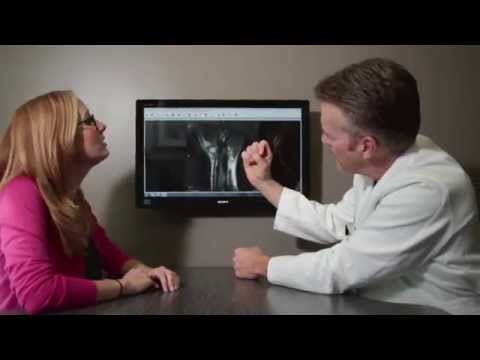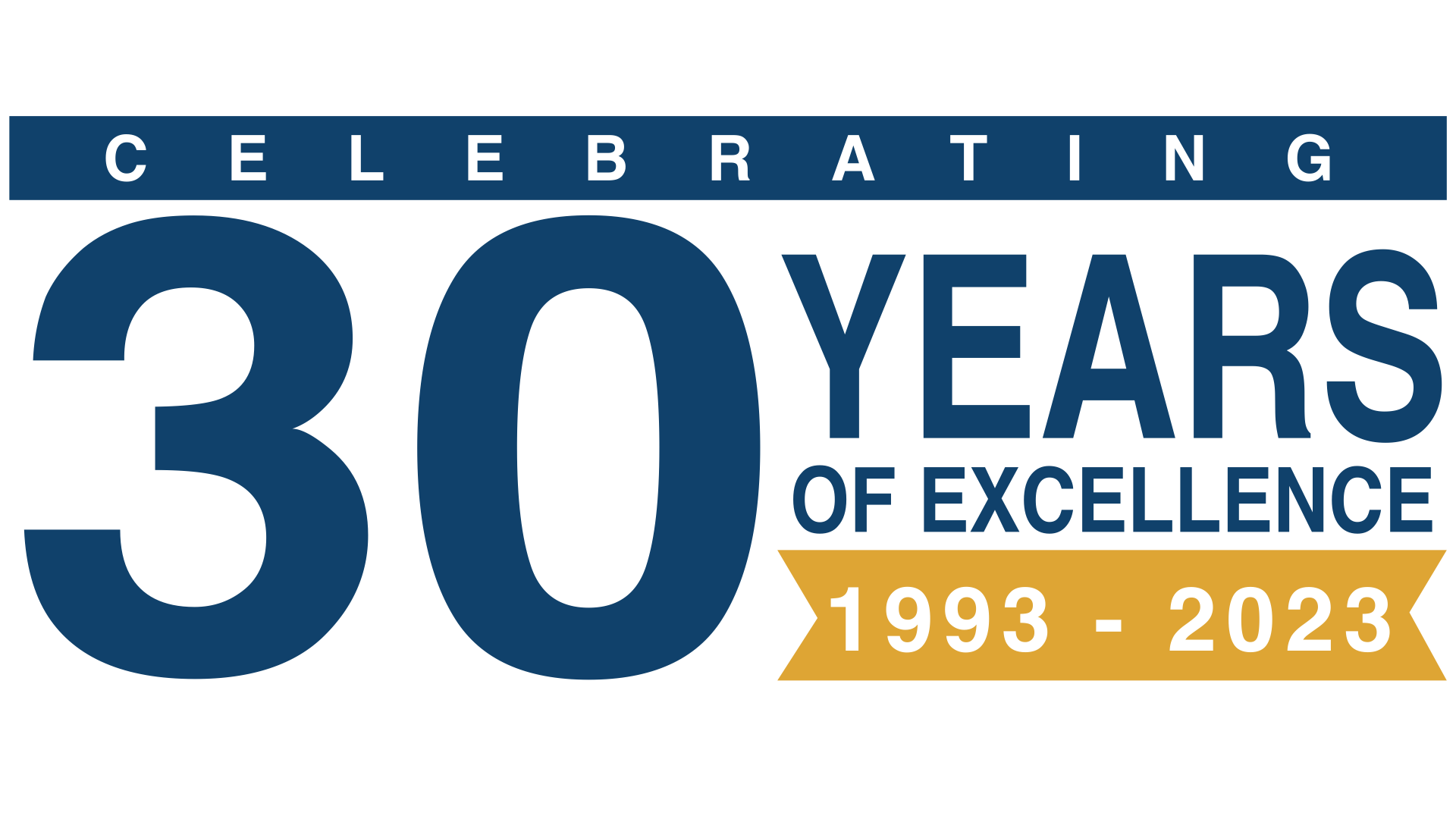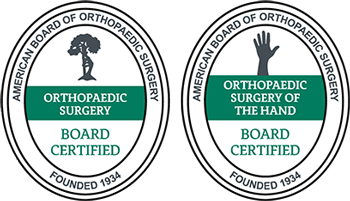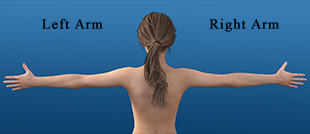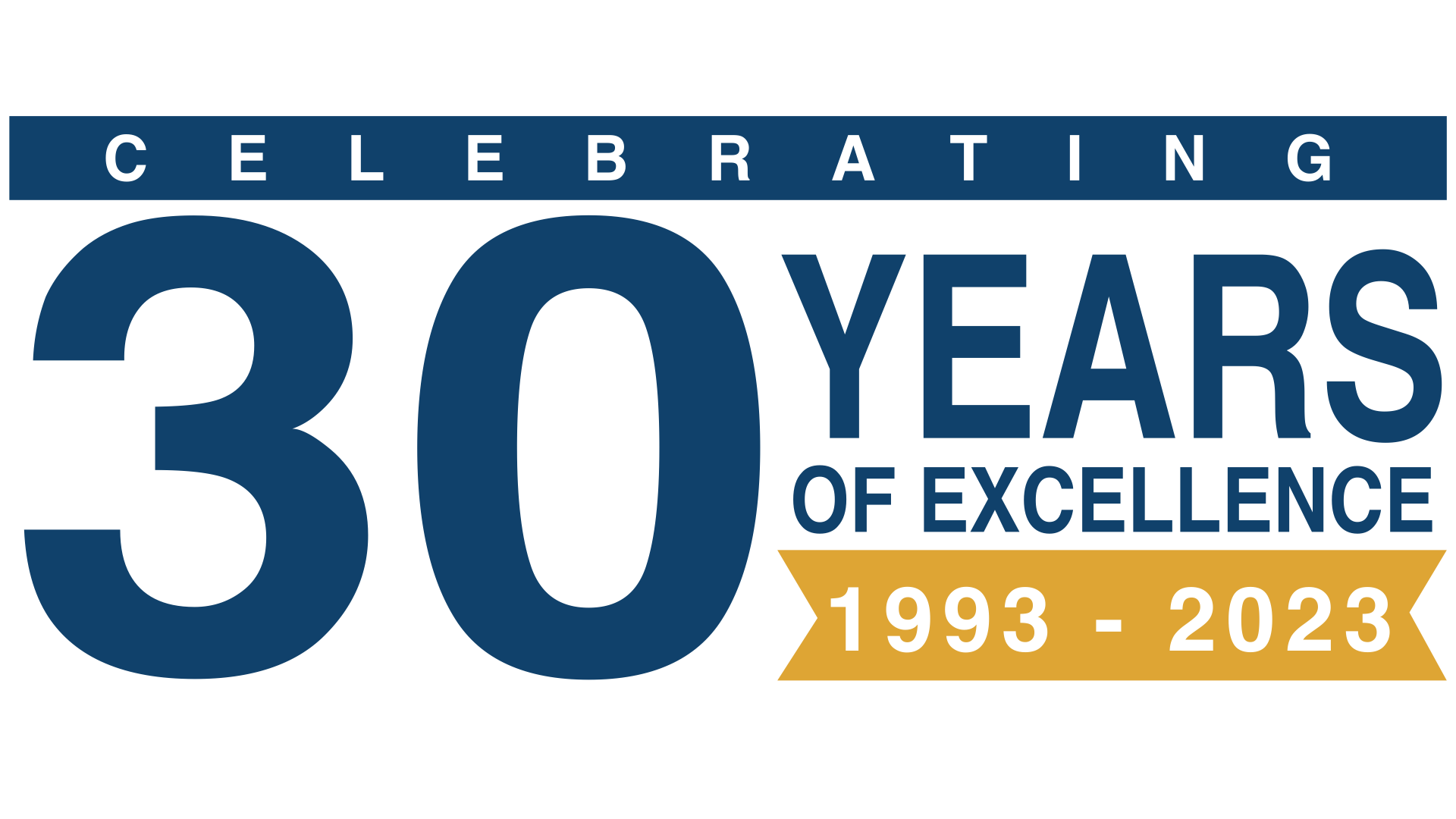Wrist Fracture Surgery
Transcript:
Let’s take a look at wrist fracture surgery. Common cause of wrist fractures, fall on an outstretched arm. Look at this snowboarder, falling full weight, impaling himself on the arm. So what are the symptoms? Let’s take a look at this next image. Typically,
Grabbing the wrist, significant pain when you break your wrist. Swelling, bruising, deformity in severe cases, really severe cases, occasionally the bone may come through the skin. So again, all of these are very worrisome when you have a lot of pain for a wrist fracture after that type of injury. Let’s look at the anatomy of the wrist.
These are the carpal bones. They’re eight bones that sit on top of the two forearm bones, the radius and the ulna. The most common fractures in the wrist involve the radius first and the scaphoid second. These are the two most common bones we’re going to concentrate on. But first, let’s look at the mechanism of injury for a distal radius fracture, again, or a scaphoid fracture. A fall on an outstretched wrist, force is going up, as you can see here, through the palm, shearing or pushing the wrist backwards. And as you can see here in this next slide, let’s look at actual collies fracture or a distal radius fracture. Most common bone at the tip of the forearm bone is a radius fracture.
Now, let’s take a look at actual displaced radius fractures. So, fractures usually are two types. Either they’re normally aligned. If they’re not, you’ve got to get them normally aligned. In a kid, you can usually pop them back in place and they’ll stay. In an adult, usually it takes surgery to correct the problem. So, here’s a displaced fracture. The ends are not lined up at all. And we’re going to show you now the next image showing the bones realigned or what we call anatomic alignment.
Again, in surgery, you’re knocked out for about 30 minutes. We put these back in place, and then frequently, we’ll actually cut open the skin and go in and put a plate and screws, as you can see here, on the front of the wrist. Now, let’s take a look at an actual patient. This is a CAT scan. Normally, we get x-rays, but frequently, the x-rays may show a fracture, but it’s normally a line, and we’ll still get a CAT scan because we’ll see little cracks running up towards the wrist joint must be pristine. It must be put back in place or is normally aligned as perfect as possible because any incongruency in the wrist joint is like a pothole on the pavement here in Los Angeles where the wheels of the car go over that pavement and can wear down the joints. We want to get that as perfect as possible. This patient, you can see the end of the radius.
The arrow is on the palm side pointing towards the radius. And these are the carpal bones out here. Look at these pieces. It’s several pieces like an eggshell exploding. And these pieces, to have a good result, need to be put back in place. So let’s take a look at what we did to this patient. We went in, put in what we call a volar plate. That’s along the volar or palm side of the forearm. We went in, put this plate and screws, putting everything perfectly back in place. And this patient had a very good result.
Now, let’s take a look now at a typical collies fracture, though, where it’s bent in a backwards position. The L on this is towards the dorsal side. This is the palm side here. Normally, the bone should be tilted slightly in a palmer direction this way, and in this case it’s pushed backwards. So we have to go in and push this back in place. Frequently I’ll go in and put a dorsal plate. You can put a volar plate, but the reason I like a dorsal plate in this patient is because we got a CAT scan that showed a split into the joint. It’s actually easy to fix when there’s a fracture in the joint or ligament damage if you go through the dorsal side. So you can see in this patient, the next image is going to show plate and screws on the back of the wrist, the dorsal side of the wrist, and we actually put two little wires in because we couldn’t get the joint pieces back in perfect alignment without them. You can see this crack going into the joint and this helps keep that in place. Now the pins we have to take out about five to six weeks later, a little minor surgery.
But another trip to the operating room just to take those out. The plate and screws is designed to stay in. About 10% of patients may develop some tendon irritation or some adhesions to that and long term may need to have the plate removed. But this is a titanium low profile plate that’s designed to stay in.
So let’s take a look at actually now the pins have been removed. You can see here the plate is on the back side of the wrist and that restoration of the tilt of the distal radius is now towards the palm. So let’s take a look now at the scaphoid which is the most common carpal bone that’s fractured. You can see here fracture through this and this is.
The scaphoid is the most important bone of the carpal bones because it bridges the row of bones here and the proximal row of bones here and links those two together. So if you look at the next image, the circulation to the scaphoid is very tenuous. You have all these arteries around the wrist joint,
But look over here on the left-hand side. You can see the arrow pointing to the scaphoid and the fracture. But just beyond that fracture is the circulation to the scaphoid. It’s not much. And when you break the scaphoid, this proximal portion, or what we call the proximal pole, can die and just fall apart like a piece of chalk or at least take quite a while to heal. The scaphoid bone can take several months to heal and sometimes doesn’t heal at all. It’s the longest healing bone in the body per se.
Now, let’s take a look actually at the surgical procedure for this. When do we do surgery? Well, if it’s just a hairline fracture, it’s not separated, you can go with a cast. It can take at least six weeks like most fractures, but in this bone, as I said, it could take several months.
But if it’s displaced, surgery is recommended. Also, in an elite athlete who doesn’t want to be in a cast for three to four months, they may elect us to go ahead and put a screw in this, which can speed up the recovery time to about five to six weeks. Let’s look at the process. We first align the fracture, realign, getting it back in its normal place. Then through a little puncture mark in the skin, we’re going to put this guide wire in.
And then over that guide wire, we’re going to run this little screw in. It’s a compression screw that forces these two pieces together, which is optimal for fracture healing. Now we’re going to take the wire out. Now we’re going to see actually an x-ray image or an animated image of what this looks like. You can see this cool picture here showing that screw in place compressing this. But let’s look at an actual human being.
This is a CAT scan showing the arrows pointing on the palm side. This is the dorsal or backside. We’re going to look at it from the side view, and then you can see a crack going through the waist or middle portion of the scaphoid. How did we fix this? We put a screw in. Let’s take a look here. This is the actual patient. This is this patient about six weeks later. Everything’s healed. You can see the screw in. No more crack is visible, and this patient’s getting back to normal activities very quickly.
Let’s take a look now at another carpal fracture, not near as common as these other two bones that we just talked about. It’s called a hamate fracture. The hamate is a bone that has a little hook or protuberance that’s coming off the palm side here. When you fall on an outstretched wrist, striking the palm on the ground or using racket or a club sport such as baseball or golf where you drive the club into that bone, it can shear it off.
Frequently it’ll take an MRI to see this and you can see actually the base of, this is the hamate bone right here, you can see this gap is where the bone is not healing and the tip of the bone here. All we do for this is we go in and simply remove the tip of the bone and start recovery right away. Not a long period of immobilization like most fractures because we’re simply removing the tip of the bone. It doesn’t have a lot of function. So we get it out of there because if it stays in there and stays painful and symptomatic, actually can rupture the tendons to the little and ring finger and cause a lot more grief in the long haul.
The next fracture we’re going to look at is called a capitate fracture. Very uncommon fracture except in very violent injuries. The next image I’m showing you right here is Robbie Madison, one of the modern-day Evo Knievel Red Bull athletes who came to me several years ago after he’d fallen about 50 feet on the track, out of doing a stunt, came down, impelled his wrist right into the ground, and after several misdiagnoses, we got a CAT scan, and we could see, actually, you can see here the fracture, the capitate’s right here. This is the tip of the capitate with the metacarpal bones out here to the middle finger, and he sheared this off. Let’s take a look, actually, at his surgery.
We go in right here. You can see we’ve put everything back in place. We’ve put these pins in right here and here. I’m showing the smooth alignment of the capitate. Everything’s back in place. We’re going to take out this retractor, and we’re basically just going to snip off the wires right here underneath the skin, as you can see here.
We’re going to take a little biter, and we’re actually going to clip that off. Again, he had three pins put in. We’re going to clip these off. We’re going to leave them under the skin for about five to six weeks until it’s healed. Then a simple procedure to go back. As you can see, the wire’s gone. Now, let’s take a look actually at Robbie’s post-surgery x-rays. Right after surgery, we actually do this with real-time, what’s called fluoroscopic imaging.
And you can see here, there are three wires. Here’s the capitate, perfectly aligned. But let’s take a look after the pins came out at a CAT scan of Robbie’s wrist. You can see here, perfect alignment of the capitate bone. This guy is an amazing athlete. Five weeks out, he had the pins out, and I said to take his time recovering. Already had a graphite brace on and was back to having other body injuries by the daredevil stunts he performs.
Now let’s take a look at actually after these surgeries. Normally we place you in a splint postoperatively for a brief period of time and then after the healing or even in a non-displaced fracture that we don’t do surgery on, we usually go to a fiberglass cast. We change it every two weeks with new x-rays just to make sure everything’s healing okay. You can see here it’s a thumb spica cast that actually comes out on the thumb. This is typical for a scaphoid fracture because
It’s been shown if you immobilize a thumb, it leads to a better healing rate or a quicker healing period. Sometimes this cast will extend above the elbow in certain fractures like a bad distal radius or collies fracture or an escaphoid fracture. Some may elect to put the cast all the way above the elbow. But usually in most patients, it’s about a six-week recovery.
For more on this and many other conditions, please take a look at our website.


